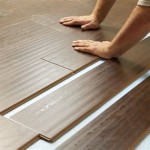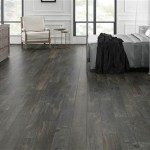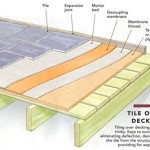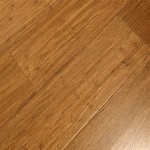Compare Linoleum and Vinyl Flooring: Essential Aspects to Consider
When selecting flooring for your home, understanding the key differences between linoleum and vinyl is crucial. Both options offer unique advantages and drawbacks, and choosing the right one depends on your specific needs and preferences.
Composition and Durability
Linoleum is made from natural materials such as linseed oil, wood flour, and limestone, giving it a biodegradable and environmentally friendly advantage. It is highly durable, resistant to wear and tear, and can last up to 40 years with proper maintenance. Vinyl, on the other hand, is a synthetic material made from PVC (polyvinyl chloride). It is also durable, but slightly less so than linoleum, with a lifespan of around 20-25 years.
Water Resistance
Both linoleum and vinyl are highly water-resistant. Linoleum is made with a moisture barrier that prevents water from seeping through, making it suitable for areas prone to spills or moisture, such as kitchens and bathrooms. Vinyl flooring is also waterproof, providing excellent protection against moisture damage.
Comfort and Warmth
Linoleum is naturally warmer and more comfortable underfoot than vinyl due to its natural materials. It has a slightly cushioned feel, making it suitable for areas where barefoot comfort is desired. Vinyl, on the other hand, can feel colder and harder underfoot. However, it can be installed with a cushioned underlayment to improve comfort.
Style and Design
Linoleum offers a classic and elegant look, with a wide range of natural color and pattern options. It can be inlaid with custom designs or cut in unique shapes to create stunning visual effects. Vinyl flooring comes in a vast array of colors, patterns, and textures that mimic natural materials such as wood, stone, and tile. It is also available in various plank and tile sizes, providing versatile design possibilities.
Installation and Maintenance
Installing linoleum requires specialized skills and tools. It is usually glued down to the subfloor and must be sealed with a protective finish. Maintaining linoleum involves regular cleaning and occasional polishing to preserve its appearance. Vinyl flooring is relatively easy to install as it can be glued down or installed as a floating floor. Regular sweeping and mopping are sufficient to keep it clean, and it is resistant to stains and fading.
Cost and Sustainability
Linoleum is typically more expensive than vinyl, especially for custom designs and inlaid patterns. However, its durability and eco-friendliness make it a long-term investment. Vinyl flooring is more affordable, but its shorter lifespan and potential environmental impact should be considered.
Conclusion
Choosing between linoleum and vinyl flooring depends on your priorities and budget. Linoleum offers natural beauty, durability, and environmental friendliness, while vinyl provides a wider range of style options, is more affordable, and is easier to maintain. Both options are excellent choices for flooring, and by understanding their key differences, you can make an informed decision that best suits your needs.

What Is The Difference Between Vinyl And Linoleum Flooring Yorkshore S Marketing

Linoleum Vs Vinyl Flooring Which Is Better

What S The Difference Linoleum Vs Vinyl Fine Homebuilding

Vinyls Vs Linoleum Flooring Major Differences Pros Cons And Costs Forbes Home

Vinyl Vs Laminate Linoleum Which Is The Best Flooring Wood And Beyond Blog

What Is The Difference Between Vinyl And Linoleum Reallyfloors America S Est Hardwood Flooring

Linoleum Vs Vinyl The Environmentally Friendly Flooring Battle Pro

Is Linoleum Flooring Right For Your Home Carpetready Net

What S The Difference Between Vinyl Linoleum Flooring Floor Coverings International

Linoleum Vs Vinyl Flooring Which Is Better
See Also







